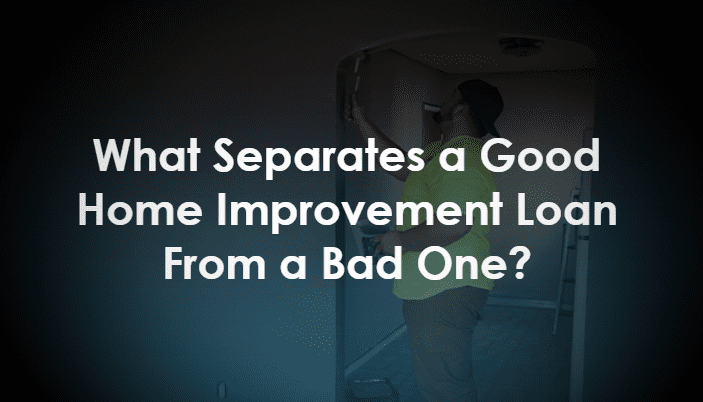If you don’t have enough cash laying around to fund your latest home renovation, home improvement loans are a great way to finance an addition or makeover that will increase your home’s value.
There are 2 main types of loans for this work and the one you pick could be a make or break moment for your financial future. When trying to find the best loan for you, the factor that makes your method of borrowing good or bad, may not be a question of how to get the money but more of what you need the money for.
What are the types of loans?
The 2 main types of home improvements loans are personal loans and home equity loans. They correspond to very specific types of home renovations and choosing the wrong one could put you in a long financial bind easily avoided by preliminary research.
A personal loan, which is unsecured by a tangible asset, is best for smaller projects. The interest rate you are able to get relies on your credit score, and you typically can only get up to $50,000 with it. Though personal loans tend to have a higher interest rate than home equity loans, they are paid off in a shorter amount of time. If you are making a minor home renovation and select a home equity loan, you could be paying for that small amount of work for up to 30 years as compared to up to 5 years with a personal loan.
Home equity loans are based on the equity you have on your home. Lenders typically will let you borrow about 85% of your home’s value based on what you’ve already paid off from your mortgage. This is great if you need a larger amount for a bigger project and can plan on paying it off, with a smaller interest rate, for a couple of decades. This is also a great option for those who have equity in their home, meaning they’ve paid off a good amount of their mortgage to have equity to borrow from. If you haven’t made much progress in these payments, a home equity loan wouldn’t be the best option.
What happens if I pick the wrong one?
Before you select which loan is right for you, assess what your needs are. What is the scale of your project? What does a mock-up budget look like? How long will the project take? Realistically, how long do you want to be paying the loan off for?
If you select a home equity loan for a smaller project that could have been financed by a personal loan, not only will you be paying that loan off for an extended period, but you will endure a lot of fees. Home equity loans are subject to fees like application fees, appraisal fees, notary fees, credit report fees, flood elevation certificate fees, and many more. Not only will you end up extending the period which you pay the loan, but before you even get it, you’ll be paying a lot out of pocket to procure your funds.
If you select a personal loan for a larger project, you may run out of funds. As the cap for personal loans tends to be around $50,000, if you don’t create a budget of what you believe your expenses might be, you could run out of capital before the project is finished. If that happens, your home won’t increase in value due to the project, which tends to be the motivation behind home renovations.
So how do I make sure I get the right loan?
Make sure that you do research.
Outline exactly what your project entails, create a budget, estimate a timeline, and assess your financial ability currently. From there, use the size of your project and the debt you’re able to take on to determine whether a large amount with a longer pay period is right for you, or if you only need a smaller loan with a short payback time.

















































